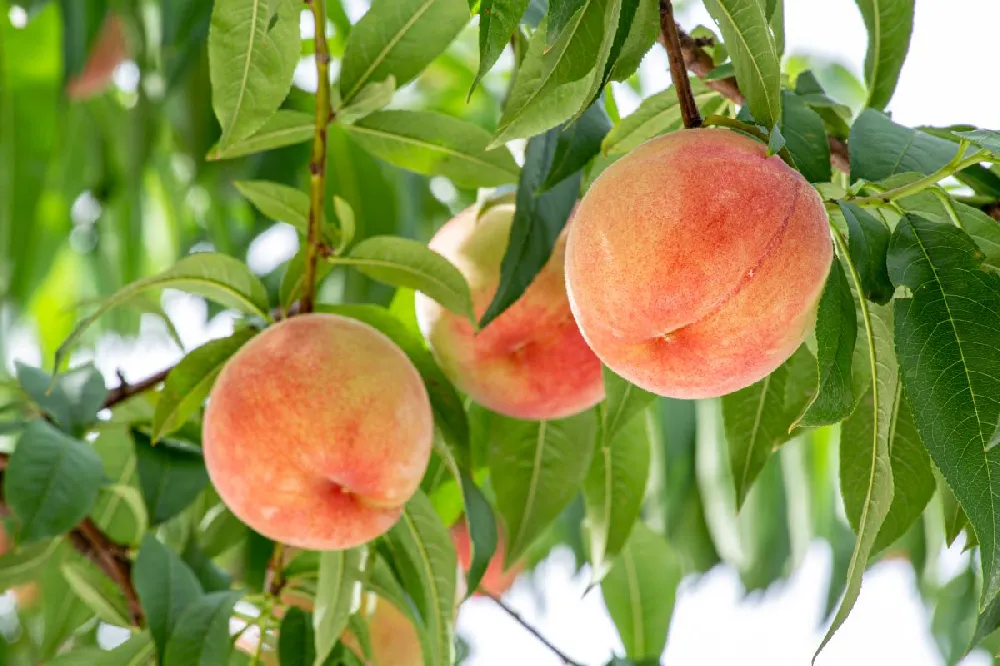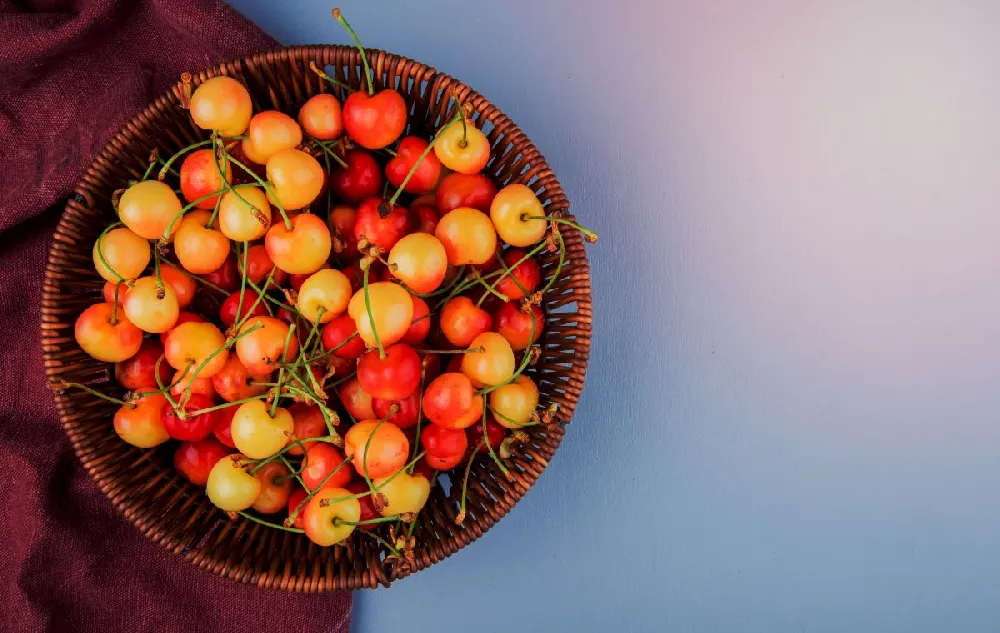- Home >
- Cherry Trees >
- Montmorency Cherry Tree
Montmorency Cherry Tree for Sale - Buying & Growing Guide
- Ships in 1-2 days
- 1-Year Warranty Eligible
- Pots or accessories are not included unless specified in the product options.
Shipping Details:
Once your order is shipped, you’ll receive an email with a tracking number and estimated delivery date. Most orders ship immediately, but some items are seasonal and may only ship in spring or fall. These products are noted on the website.
The top reason to grow a Montmorency cherry tree is to enjoy the tart cherries that this tree produces in high quantities each year. Those cherries have a fantastic flavor and are some of the most popular cherry varieties to use when making baked goods, such as cherry pies. The Montmorency cherry tree, Prunus cerasus 'Montmorency,' is also valuable for its cold-hardiness, surviving even when temperatures dip below zero degrees Fahrenheit, and its ornamental appeal, as it blooms with pristine white flowers that cover the entire canopy in spring.
- The Montmorency cherry tree grows some of the best cherries to use in baking.
- Cold-hardiness allows this tree to grow in many regions.
- White blooms cover the canopy in spring.
Plant Care
Sunlight

TheMontmorency cherry tree requires full sunlight for proper fruit development.
Watering
Water about once per week or once every other week. Avoid overwatering.
Fertilizing

Fertilize once per year in spring with a mix that is low in nitrogen.
Planting and Care
Planting instructions
Full sunlight, about six to eight hours of direct exposure daily, is a crucial requirement for any Montmorency cherry tree. Without plenty of sunlight, this plant may show weak growth and will likely fail to produce high-quality cherries in high quantities, as it has the potential to do. The characteristics of the soil in your planting location are equally important. Montmorency cherry trees should grow in loam or sandy soils that allow for drainage. Without proper drainage, the roots of this tree will become too wet, often leading to disease.
Watering and nutrients
Overwatering is one of the worst outcomes for a Montmorency cherry tree. However, while too much water is a significant problem, a lack of moisture can be detrimental as well. Typically, you should water your Montmorency tree about once every week or once every two weeks to keep the soil moist but not waterlogged. The fertilization requirements of this tree are easier to meet, as a single yearly feeding in early spring is often enough to produce healthy growth. When fertilizing, you should use a mix that is low in nitrogen, but a balanced fertilizer may work as well.
Pollination
Since the goal of growing a Montmorency cherry tree is to develop healthy fruits, pollination is incredibly important. Fortunately, unlike the many sweet cherry tree varieties, Montmorency cherry trees are easy to pollinate. These trees are self-fertile, which means that you need only one tree to produce fruits, and they typically rely on insects to transfer pollen from the male structures to the female ones. However, as is true for most fruiting trees, having a second tree nearby, allowing for cross-pollination, often leads to a larger harvest.
Pruning
Pruning is essential for your Montmorency cherry tree if you want it to produce fruits at its fullest capacity. During late winter, after the freezing temperatures have passed, use your pruning shears to remove any weak branches or those that have failed to produce cherries in the past season. You should also encourage lateral branches, as these are better able to carry fruits than those that grow at a narrower angle to the trunk. Thinning the canopy helps to ensure that sunlight reaches all the branches, which also encourages better fruiting.
Pests, diseases, and animals
Unfortunately, Montmorency cherry trees can be susceptible to many pests and diseases. Some of these issues will cause damage to the fruits, while others are more likely to affect the foliage. For instance, the cherry fruit fly can cause damage to your tree’s fruits and lay eggs within the fruit. Other pests, like aphids, moths, borers, and beetles, can also harm your tree. Several diseases can also arise in a Montmorency cherry tree, with different forms of rot being some of the most common.
Harvesting
The harvest time for a Montmorency cherry tree usually occurs during the summer months of July or August and will last for about two weeks. The best way to know if your cherries are ready for harvest is by looking at the color. A ripe Montmorency cherry tree will have a deep red color and should be easy to remove from its branch. Remember that these fruits can be quite delicate, so you should use caution when removing them. Using your hands to gently remove individual cherries is the best way to harvest them while keeping them undamaged.
Achieving maximum results
The most vital soil characteristic for a Montmorency cherry tree is drainage. In fact, proper drainage matters more than having a high availability of soil nutrients, which is why this tree often grows well in sandy soils. You should also be sure not to fertilize your Montmorency cherry tree too late in the season. Fertilizing in summer or fall can cause this tree to produce new growth that will die in the winter or cause a weak overall growth habit.
FAQs
How long does it take a Montmorency cherry tree to produce fruits?
Why is it called a Montmorency cherry tree?
The Montmorency cherry tree gets its name from the small region in northern France from which it originates. This region is known as the Montmorency valley. After its emergence, this tree quickly gained popularity throughout other European countries, including England. Eventually, this tree made its way to the United States and became perhaps the most popular of all tart cherry varieties. At times, this tree has gone by different common names. However, Montmorency cherry tree remains one of the most common names.
What does a Montmorency cherry taste like?
Montmorency cherries have a distinct flavor that is quite different from that of the sweet cherries you're likely used to eating raw. In contrast to that sweetness, Montmorency cherries are far more tart and can have a slight tang as well. Due to that tartness, it's rare to eat these cherries raw. Instead, those who harvest Montmorency cherries are far more likely to use them for baking or making jam. Mixing Montmorency cherries with sweet cherries in those dishes often makes for the best-tasting results.
Compare Similar Products
You can't add more Product Name - Product size to the cart.
OK








